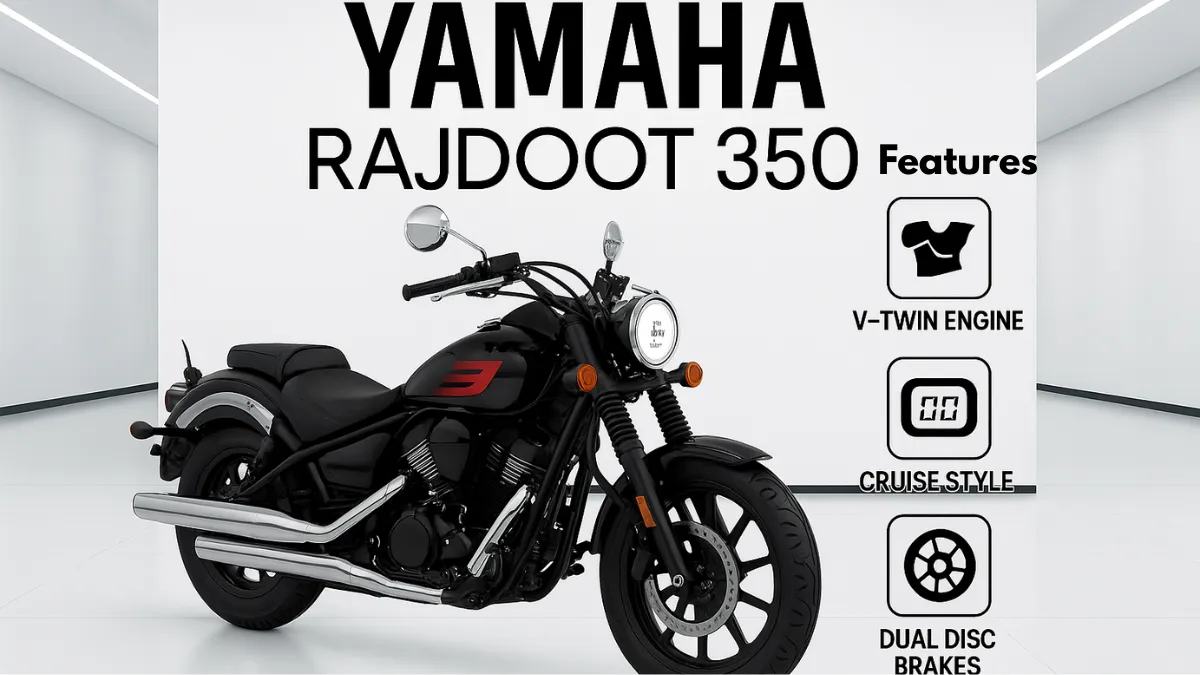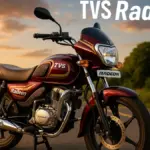Yamaha Rajdoot 350 Features wasn’t just a motorcycle. It was a dream on two wheels. When it hit Indian roads back in the early 1980s, it brought a level of power and performance that people had never seen before.
It was fast. It was loud. And it looked like nothing else on the road.
At a time when most bikes were all about fuel economy, the Rajdoot 350 came in with a mission: to thrill. And even today, decades later, it still has a fanbase. If you’re wondering why, or if you just want to understand what made this machine so special, read on — we’re diving deep into the Yamaha Rajdoot 350 features that made it a true icon.
1. Born from Racing Blood
The Rajdoot 350 was based on the Yamaha RD350 — a motorcycle known worldwide for its racing DNA. In India, it was rebranded and built in collaboration with Escorts Group and Yamaha, and it hit the market in 1983.
Back then, the average bike gave you around 7 to 10 horsepower. The Rajdoot 350? Over 30 horsepower. That’s a huge jump. This bike was built for riders who wanted power, thrill, and speed.
2. Engine That Meant Business
At the heart of the Yamaha Rajdoot 350 Features was its twin-cylinder, 2-stroke engine. And what a beast it was.
- Engine size: 347cc
- Type: Air-cooled, 2-stroke, parallel twin
- Power: Around 30.5 bhp in the “High Torque” version
- Torque: Roughly 32 Nm
- Fuel system: Twin carburetors (one for each cylinder)
The moment you twisted the throttle, the bike came alive. It didn’t slowly build speed like modern commuter bikes — it surged forward with a rush that you could feel in your bones. That’s what made it exciting. And loud.
3. Gears That Kept Up
Unlike most bikes at the time (which had 3 or 4 gears), the Rajdoot came with a 6-speed gearbox. That meant smoother power delivery, better top-end performance, and a lot more fun.
- Clutch: Multi-plate wet clutch (pretty standard, but handled the power well)
- Final drive: Chain (like most bikes)
Whether you were riding in the city or cruising on the highway, the gearbox kept things smooth and responsive.
4. That Classic, No-Nonsense Look
Visually, the Yamaha Rajdoot 350 Features looked tough, stylish, and straight to the point. No wild curves, no unnecessary bulk. It was all muscle and attitude.
Design Highlights:
- Round headlight: Clean and classic
- Twin exhausts: One on each side — shiny, chrome-finished, and LOUD
- Twin dial instrument cluster: Speedo and tachometer — pure analog charm
- Flat seat: Long and comfy
- Tank design: Simple but aggressive
Today, that styling is considered vintage cool. It wasn’t flashy — but it had presence.
5. Strong Frame and Suspension
To handle all that power, the Rajdoot needed a solid frame — and it delivered.
- Chassis: Double cradle tubular frame (strong and stable)
- Front suspension: Telescopic forks
- Rear suspension: Twin shock absorbers
It felt planted, whether you were flying down a highway or carving through twisty roads. The suspension did a good job soaking up bumps, although it could get a bit bouncy over rough patches.
6. Braking — Not the Best, But Got the Job Done
Here’s where the bike was a little old-school.
- Front brake: Disc (in the high-torque version)
- Rear brake: Drum
Back then, disc brakes weren’t common, and ABS didn’t exist. So, while the brakes worked fine for their time, you needed to be alert — especially when riding fast. Many riders learned to use engine braking to slow down smoothly.
7. Tyres and Wheels
The Rajdoot 350 rode on 18-inch spoke wheels — the standard setup back then.
- Tyres: Slim by today’s standards, but gave decent grip
- Wheel type: Spoke wheels with tube-type tyres
It handled corners well and didn’t feel heavy despite its size.
8. Performance That Blew Minds
This is where the Rajdoot 350 truly shined. For a bike in 1983, it was unbelievably fast.
- 0–60 km/h: Around 4 seconds
- Top speed: Between 140–150 km/h
- Fuel economy: 20–25 km/l (depending on how hard you rode)
Yes, it drank fuel — but it also gave you performance that was way ahead of its time. It wasn’t built for saving fuel. It was built for speed.
9. That Famous Two-Stroke Sound
If you’ve ever heard a Yamaha Rajdoot 350 ride past, you’ll remember that sound. A deep, crackling, sharp exhaust note that echoed through the streets.
The twin exhaust pipes made it even more dramatic. It was raw, raspy, and full of energy. No modern bike sounds like it.
10. Simple Electricals
Nothing fancy here, but everything worked:
- Headlight: 12V halogen
- Indicators: Chrome and bulb-based
- Battery: Basic 12V
- Speedo and Tacho: Analog, no digital displays
It was all mechanical. And that’s exactly what made it feel so “real” to ride.
11. What It Felt Like to Ride
If you’ve ridden modern bikes, hopping on a Rajdoot 350 is like going back to the roots. No rider modes. No traction control. No electronics.
Just you, the engine, and the road.
The ride:
- In the city: Could get hot in traffic, but had crazy torque
- On highways: Smooth, fast, and loud — pure fun
- Corners: Handled well if you knew what you were doing
Pillion comfort was decent, and the seat was wide enough for two. But let’s be honest — this was a rider’s bike, not a family scooter.
12. Why It Didn’t Sell Big Numbers
For all its glory, the Rajdoot 350 wasn’t for everyone.
- It was expensive
- It used more fuel
- Maintenance was tricky
- Mechanics weren’t trained to handle it
- Most people weren’t ready for its power
So, eventually, sales dropped, and production stopped in the early 1990s. But the legend was just beginning.
13. Rajdoot 350 Today: A Collector’s Dream
Today, the Yamaha Rajdoot 350 features in vintage bike shows, collectors’ garages, and online forums. People restore them, modify them into cafe racers, or just ride them as is.
Parts are harder to find, but the love for this bike is stronger than ever.
14. Rajdoot 350 vs Today’s 350cc Bikes
Let’s compare it to some modern 350cc machines:
| Feature | Rajdoot 350 | Modern 350cc Bike |
|---|---|---|
| Engine | 2-stroke twin | 4-stroke single |
| Power | 30+ BHP | 20–24 BHP |
| Top Speed | 150 km/h | 120–130 km/h |
| Mileage | 20–25 km/l | 30–40 km/l |
| Weight | 155 kg approx. | 190+ kg |
| Sound | Loud, raspy | Mellow or muted |
Modern bikes are smoother and more efficient, but they don’t quite match the thrill and rawness of the Rajdoot 350.
15. Should You Buy One Today?
If you find one in good condition — and you love bikes with soul — go for it.
Just keep in mind:
- Maintenance can be tricky
- Spare parts may take effort to find
- Fuel economy isn’t great
- You’ll turn heads wherever you go
This bike is for the passionate. If you want a taste of old-school motorcycling with modern-day charm, the Rajdoot 350 is a gem.
Conclusion: A True Indian Icon
The Yamaha Rajdoot 350 features a unique place in Indian motorcycle history. It was bold, fast, and full of character. While it wasn’t perfect, it gave Indian riders a real taste of performance and set the stage for every sports bike that came after.
Today, it’s more than just a motorcycle — it’s a legend.








